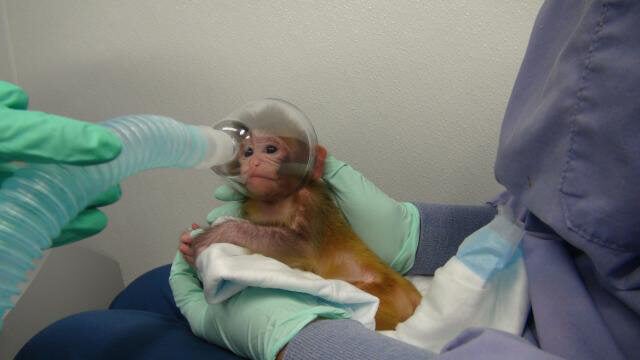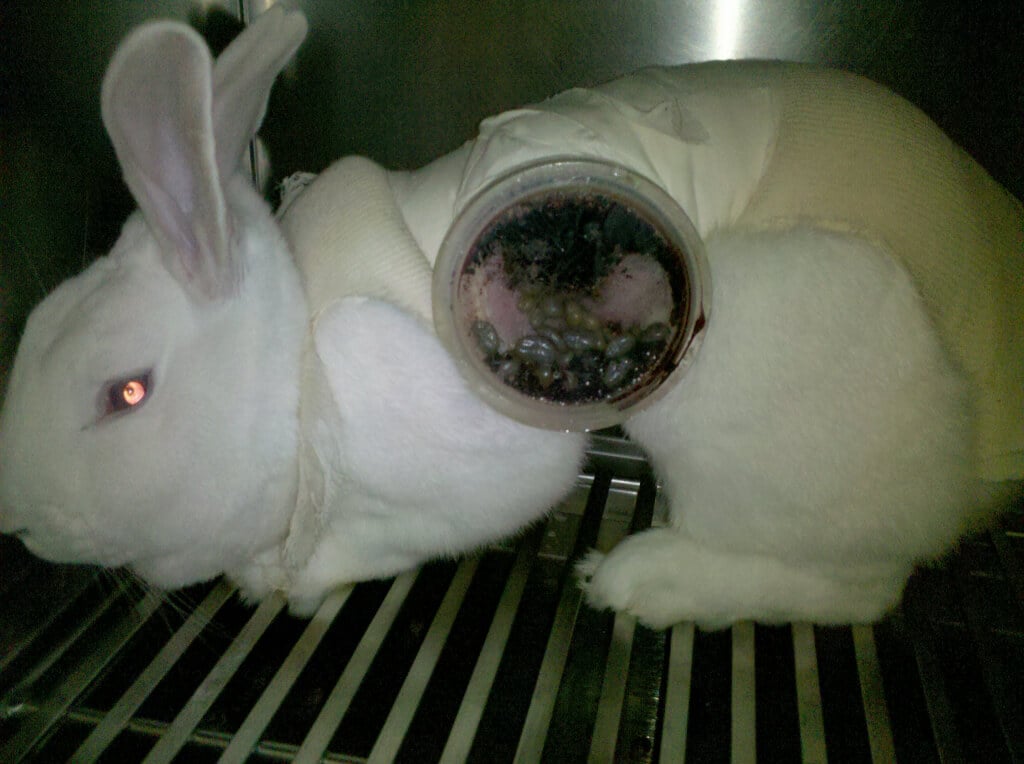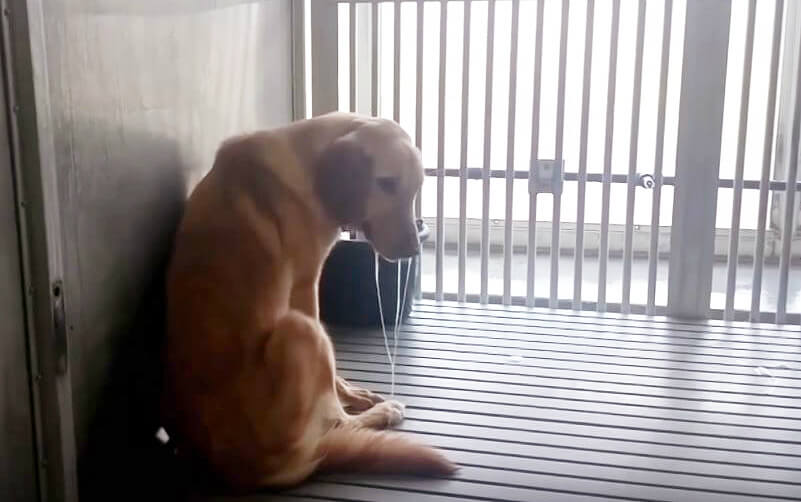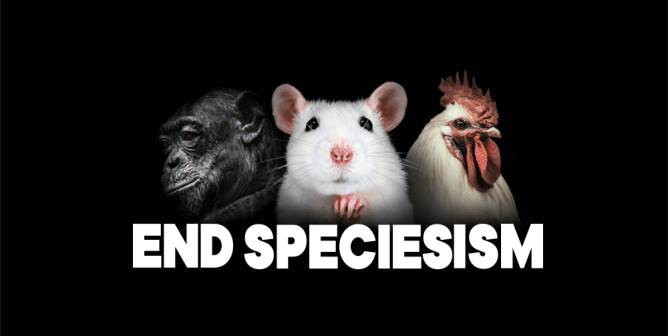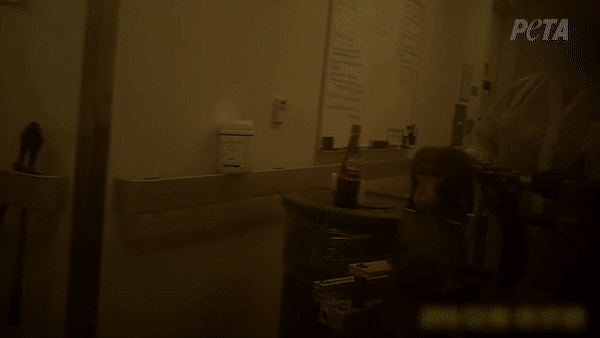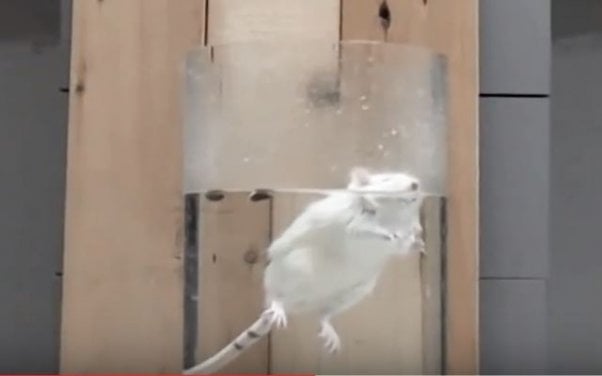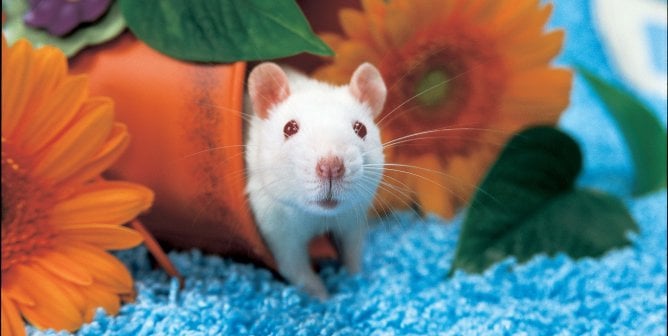16 Pictures That Sum Up Animal Testing
Experimenters claim that they ensure the welfare of animals imprisoned in their laboratories. Take a look at these 16 pictures of animal experiments—some of which are still taking place right now—and decide for yourself if their claim is to be believed. PETA obtained many of these photos through open-records laws, whistleblowers, and eyewitness investigations.
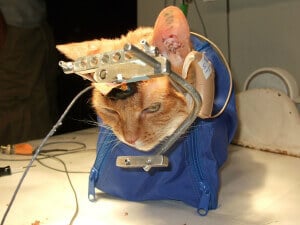
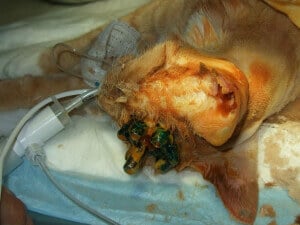
At the University of Wisconsin–Madison, experimenters drilled holes into cats’ skulls, screwed metal restraint posts into their heads, implanted steel coils in their eyes, and deafened them in useless “sound localization” experiments. The lead experimenter admitted that “our goal is not to produce a clinical treatment or a cure.” A vigorous PETA campaign got these experiments stopped and the lab closed, but other experiments on cats are still going on in other laboratories.
Experimenter Stephen Suomi directed disturbing psychological experiments on infant monkeys for more than 30 years at a taxpayer-funded National Institutes of Health (NIH) laboratory in Maryland. Starting when the babies were only a week old, experimenters subjected them to years of torment meant to cause psychological trauma and mental illness. PETA got Suomi’s lab shut down, but NIH continues to fund other studies on monkeys—even though they’re irrelevant to human health—while promising human-relevant studies are underfunded.
A PETA investigation into Professional Laboratory and Research Services Inc., which tested insecticides and other chemicals on dogs, cats, and rabbits, revealed chronic neglect and physical abuse in addition to painful experiments. In one test, capsules containing thousands of ticks were strapped to rabbits so that the ticks could feast on them. After PETA released our findings, the laboratory was shut down and all the dogs, cats, and rabbits were adopted into loving homes.

At Texas A&M University, experimenters bred dogs to develop canine muscular dystrophy, which caused them to become progressively disabled—making it hard for them to do almost anything, including eat and stand. The dogs were confined to barren metal cells, and their legs were stretched with a motorized lever to cause muscle tears. Decades of this abuse hasn’t put a treatment on the market that reverses symptoms of muscular dystrophy in humans. PETA’s relentless pressure ended the breeding and shut down the laboratory, and the surviving healthy golden retrievers were put up for adoption.

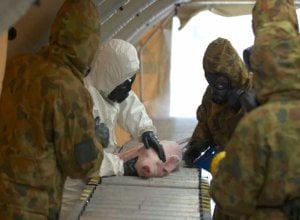
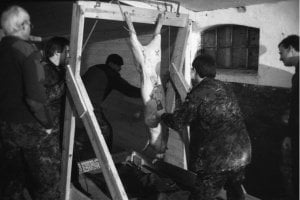
In military trauma training exercises, live goats’ legs are broken and cut off with tree trimmers and live pigs are shot, stabbed, and burned. Following pressure from PETA and members of Congress, the U.S. military has massively reduced the number of animals it uses in trauma training drills—and the U.S. Coast Guard ended all use of animals in these exercises and replaced them with superior, high-tech human-patient simulators. A bipartisan law including a PETA-backed provision has—for the first time—made human-simulation technology the new gold standard of trauma training, meaning that the U.S. military must use it before considering harming any animals in trauma drills.
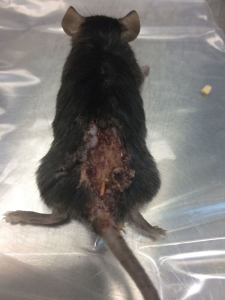
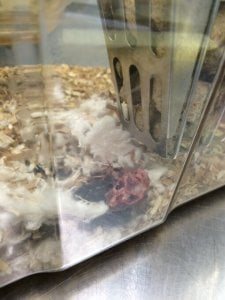
Mice and rats are excluded from the meager (and often violated) protections of the Animal Welfare Act, meaning that almost anything can be done to these animals in laboratories. A PETA investigation into the University of Pittsburgh (Pitt) showed that Rajesh Aneja took NIH taxpayer funding to puncture the intestines of mice, causing fecal matter to leak into their stomachs and kill them slowly and painfully. Stressed mice fought, sometimes causing traumatic wounds.
Monkeys in experiments at Pitt are restrained in chairs with their heads clamped into viselike metal collars. When they’re not trapped in these chairs, they’re imprisoned in cages, where many lose their minds.
In university and pharmaceutical laboratories, experimenters drop terrified mice and other small animals into inescapable beakers of water and force the tired animals to keep swimming in order to avoid drowning. After talks with PETA, numerous pharmaceutical giants—including Johnson & Johnson and AbbVie—banned the forced swim test. But Eli Lilly and Sanofi have not.

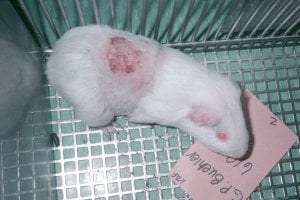
In tests for cosmetics and household products in China, chemicals are poured into animals’ eyes, rubbed onto their skin, and forced down their throats. PETA-backed scientists and forward-thinking companies have made progress in eliminating many—but not yet all—of these tests. Fortunately, following numerous investigations and increased consumer demand, more than 6,000 cosmetics and personal-care product companies have banned all such tests and are now listed as “cruelty-free” in PETA’s database.
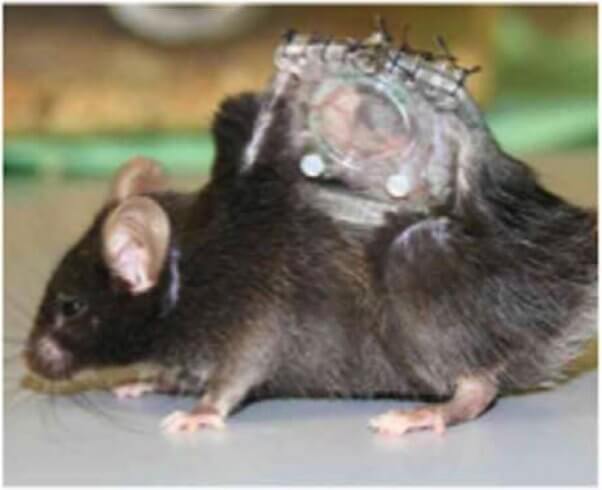
At the University of Virginia (UVA), experimenters cut open the skin on mice’s backs, tented it, punched holes in it, and fitted it with a window so that they could watch the blood circulate. The animals then endured a prolonged and painful death. In another procedure at UVA, pairs of live mice were cut open and their bodies were sewn together. They were likely in excruciating pain during the short time they lived.
The cruel procedure depicted in the video above, in which two mice are surgically joined so that they share a bloodstream, was performed at the University of California–Los Angeles. A similar procedure was performed on mice in the UVA experiment.
This was just a small sample of the countless ways experimenters have tortured animals throughout history. PETA’s interactive timeline, “Without Consent,” features almost 200 stories of cruel animal experiments from the past century, including ones in which dogs were forced to inhale cigarette smoke for months, mice were cut up while still conscious, and cats were deafened, paralyzed, and drowned. Visit “Without Consent” to learn about more harrowing animal experiments throughout history and how you can help create a better future for living, feeling beings.
All these experiments caused animals to suffer and should never have been carried out. It’s unethical to torture animals, especially when many reliable and humane research methods—including organs-on-chips and high-tech human simulators—are readily available and already in use in laboratories around the globe. PETA and other PETA entities help fund their development, publish studies on their benefits, and vigorously promote their use.
PETA thrust animal testing into the spotlight and onto front pages of newspapers everywhere with our landmark Silver Spring monkeys investigation in 1981. And we continue to dedicate more time and resources to ending experiments on animals than any other organization in the world. We persuaded the Environmental Protection Agency to prevent 800,000 animals from enduring chemical toxicity testing, persuaded the European Chemicals Agency to replace 4.5 million animals in a massive European Union testing program with humane alternatives, and got NASA to cancel plans for a $1.75 million study in which squirrel monkeys would’ve been exposed to harmful radiation—and we’ve racked up hundreds of other victories.
Help us continue winning for animals in laboratories: Urge Congress to support PETA scientists’ Research Modernization Deal, a plan for replacing the use of animals in experiments with human-relevant methods; commit to buying cruelty-free products; support charities that conduct advanced, sophisticated, non-animal research; and use our prefilled form to quickly take action for animals who are suffering in seven laboratories right now.
From PETA and executive producer Bill Maher, the new docuseries ‘The Failed Experiment’ exposes what most people don’t know about experiments on animals.

